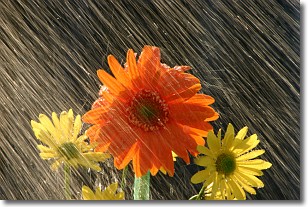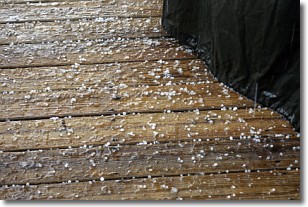Weather Alert in Tennessee
Severe Thunderstorm Warning issued April 3 at 4:07AM CDT until April 3 at 5:00AM CDT by NWS Nashville TN
AREAS AFFECTED: Davidson, TN; Macon, TN; Smith, TN; Sumner, TN; Trousdale, TN; Wilson, TN
DESCRIPTION: SVROHX The National Weather Service in Nashville has issued a * Severe Thunderstorm Warning for... Northwestern Smith County in Middle Tennessee... Southeastern Davidson County in Middle Tennessee... Southeastern Sumner County in Middle Tennessee... Wilson County in Middle Tennessee... Western Macon County in Middle Tennessee... Trousdale County in Middle Tennessee... * Until 500 AM CDT. * At 407 AM CDT, a severe thunderstorm was located over Hermitage, or 9 miles east of Nashville, moving northeast at 50 mph. HAZARD...60 mph wind gusts and quarter size hail. SOURCE...Radar indicated. IMPACT...Hail damage to vehicles is expected. Expect wind damage to roofs, siding, and trees. * Locations impacted include... Madison, Hermitage, Hartsville, Gallatin, Bledsoe Creek State Park, Dickerson Chapel Recreation Area, Hendersonville, Carthage, Berry Hill, Mount Juliet, South Carthage, Green Hill, Tuckers Crossroads, Bethpage, Rural Hill, Dixon Springs, Nashville, Antioch, Belinda City, and Lakewood. This includes the following highways... Interstate 40 between mile markers 207 and 247. Interstate 65 between mile markers 79 and 92. Interstate 24 between mile markers 44 and 61. Interstate 840 between mile markers 68 and 76.
INSTRUCTION: Remain alert for a possible tornado! Tornadoes can develop quickly from severe thunderstorms. If you spot a tornado go at once into the basement or small central room in a sturdy structure. For your protection move to an interior room on the lowest floor of a building. A Tornado Watch remains in effect until 600 AM CDT for Middle Tennessee.
Want more detail? Get the Complete 7 Day and Night Detailed Forecast!
Current U.S. National Radar--Current
The Current National Weather Radar is shown below with a UTC Time (subtract 5 hours from UTC to get Eastern Time).

National Weather Forecast--Current
The Current National Weather Forecast and National Weather Map are shown below.

National Weather Forecast for Tomorrow
Tomorrow National Weather Forecast and Tomorrow National Weather Map are show below.

North America Water Vapor (Moisture)
This map shows recent moisture content over North America. Bright and colored areas show high moisture (ie, clouds); brown indicates very little moisture present; black indicates no moisture.

Weather Topic: What is Rain?
Home - Education - Precipitation - Rain
 Next Topic: Shelf Clouds
Next Topic: Shelf Clouds
Precipitation in the form of water droplets is called rain.
Rain generally has a tendency to fall with less intensity over a greater period
of time, and when rainfall is more severe it is usually less sustained.
Rain is the most common form of precipitation and happens with greater frequency
depending on the season and regional influences. Cities have been shown to have
an observable effect on rainfall, due to an effect called the urban heat island.
Compared to upwind, monthly rainfall between twenty and forty miles downwind of
cities is 30% greater.
Next Topic: Shelf Clouds
Weather Topic: What is Sleet?
Home - Education - Precipitation - Sleet
 Next Topic: Snow
Next Topic: Snow
Sleet is a form of precipitation in which small ice pellets are the primary
components. These ice pellets are smaller and more translucent than hailstones,
and harder than graupel. Sleet is caused by specific atmospheric conditions and
therefore typically doesn't last for extended periods of time.
The condition which leads to sleet formation requires a warmer body of air to be
wedged in between two sub-freezing bodies of air. When snow falls through a warmer
layer of air it melts, and as it falls through the next sub-freezing body of air
it freezes again, forming ice pellets known as sleet. In some cases, water
droplets don't have time to freeze before reaching the surface and the result is
freezing rain.
Next Topic: Snow
Current conditions powered by WeatherAPI.com




